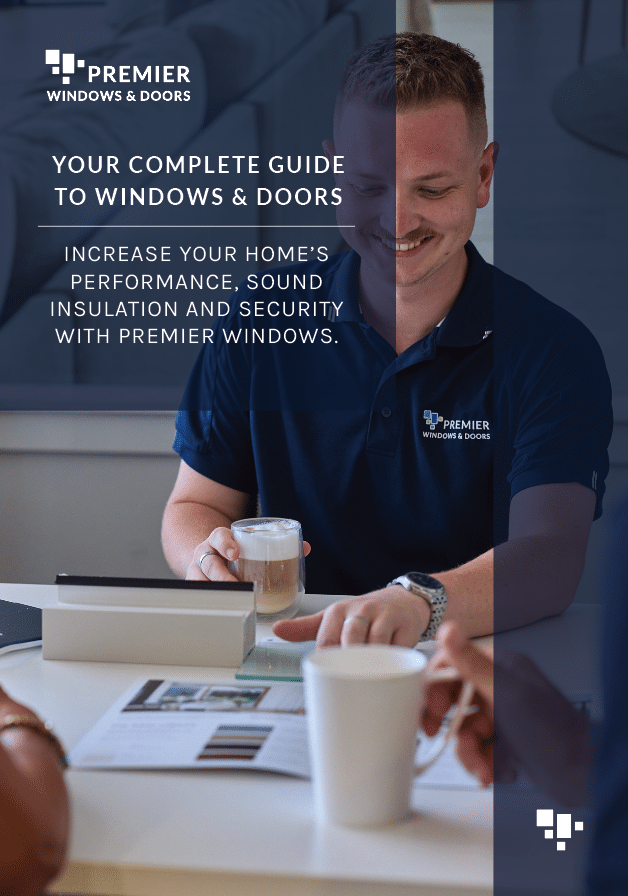Low-E glass is an innovative and effective solution to one of the biggest challenges for homeowners – maintaining comfortable indoor temperatures year-round without breaking the bank on energy costs. It outperforms standard double-glazed windows by using microscopically thin coatings that can significantly improve thermal efficiency. So what does this mean for you? This post will provide a detailed overview of Low-E glass’s functions, highlight benefits and explain why when specified with Aluplast frames it’s particularly well-suited for the WA climate.
What is Low-E Glass?
Low-E, or low-emissivity glass, features a microscopically thin coating that reflects infrared energy (heat) and ultraviolet light while allowing visible light to pass through. This coating is usually made from metallic oxides and is applied to one of the glass surfaces inside insulated glazing.
What Does Low-E Glass Do?
To fully understand how this works, it’s important to understand the effects different wavelengths of light have. Along with visible light, the sun emits infrared light and ultraviolet light. Infrared (or heat energy) has longer wavelengths than visible light and is primarily responsible for the heat transfer from the sun. In contrast, ultraviolet light has shorter wavelengths and is known for causing fading in interior materials like fabrics and wall coverings. The key function of Low-E glass is to minimise the passage of ultraviolet and infrared light through the glass while still allowing plenty of visible light to enter.
What is Emissivity?
When infrared light hits glass, the heat energy can either be dispersed by air movement or is re-emitted by the surface of the glass. This re-emission capability is called emissivity. Typically, highly reflective materials have low emissivity, meaning they emit less energy. This property is the core concept behind Low-E glass, as the thin metallic coating on the glass lowers its emissivity, resulting in improved heat efficiency.
While all low E glass offers improved thermal efficiency in any scenario, there are two distinct types tailored to specific environments.
Low-E Glass and Heat Reflection
While all Low-E glass reflects a significant portion of the incoming infrared, Solar Control Low-E Coating is specifically designed to have a very low emissivity, further minimising the amount of heat that enters a building from the outside and is particularly beneficial in warmer climates. This reduction in heat intake lowers cooling demands.
Low-E Glass and Heat Retention
In many places, retaining heat inside a home is just as important as keeping it out. Low-E glass helps in trapping indoor heat by reflecting it into the room. Passive Low-E Coating is engineered to maximise energy efficiency by minimising heat loss through windows. This is achieved with a coating with a slightly higher emissivity than solar control and excels at reflecting heat into the room, making it ideal for colder climates and lowering heating costs.
The Pros & Cons Of Low E Glass
While all standard double glazing provides two layers of glass with an air space between to reduce the transfer of heat, Low-E glass takes energy efficiency a step further. Here are some of the benefits of Low-E glass compared to standard double glazing:
Pros of Low-E Glass:
- Energy Efficiency: With better thermal regulation, Low-E glass reduces the need for heating and cooling, which can lead to substantial savings on energy bills.
- UV Protection: It blocks harmful UV rays, protecting interior fabrics and materials from fading.
- Environmental Impact: Lowers the carbon footprint by reducing the need for heating and cooling.
Cons of Low-E Glass:
- Light Reduction: It’s important to note that the Low-E coating slightly reduces the amount of natural light passing through the glass. However, this can also be a benefit, the slight decrease in brightness also offers glare reduction.

Why Low-E Glass Is Useful in Australia’s Changing Climate
As Australia experiences ongoing climate changes, with an average temperature increase of over 1°C since 1910 and a significant rise since 1950, extreme heat events and severe droughts have become more frequent. Low-E glass provides a proactive solution to these changes by enhancing a home’s thermal performance.
Premier Windows is a locally owned and operated business in WA, and we take great pride in delivering exceptional quality windows and doors and the personalised service you would expect from a trusted local supplier. Given the diverse climate across our region, Low-E glass windows offer an ideal solution to accommodate these varying conditions across WA. Learn more about Double Glazing in Perth here, and discover how Premier Windows can transform your living space.
Whether building a new home or upgrading existing windows, considering Low-E glass is a decision that pays dividends in comfort, savings, and environmental impact. If you have any questions or would like to arrange a quote, please contact Premier Windows & Doors today.
